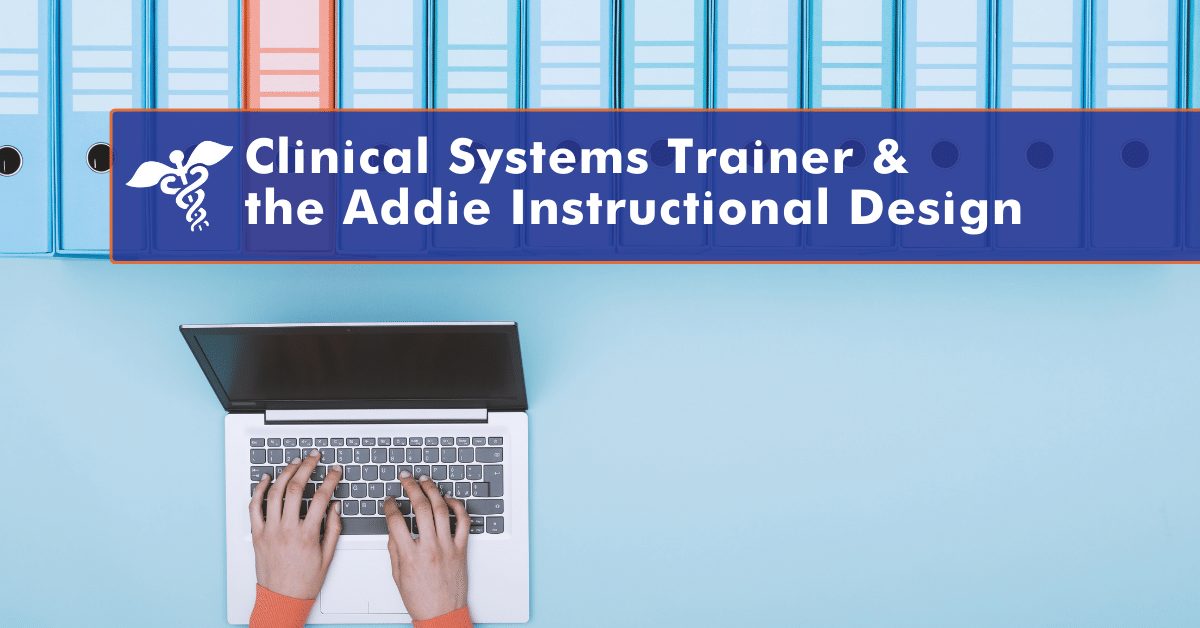

As a Clinical Systems Trainer (CST) we train users on the different programs that pertain to patients Electronic Health Record (EHR). The users will range from seasoned vets of using the programs to very limited computer knowledge become learners at all different levels. By using the Addie Instructional Design we are able to address the users specific needs based on their competency and the stands of their job. You wouldn’t want to go over everything a physician would need to see a patient when training a new front desk clerk. The simple answer of why to use it and what the benefits are is that it provides the who, what, when, and where as to sound decision making. When an overall view of the learning process is provided, an orderly process is put into play that helps to address all of the different training needs.
There are five phases in the Addie Instructional Design.
Phase 1
One must begin by first analyzing the new learner with a series of questions address to the learner. In the analysis phase, the instructional problems are identified. You will need to identify the learning environment as well as the existing knowledge and skills of the learner.
Phase 2
The design phase requires dealing with learning objectives, exercises, assessments, content, as well a subject matter analysis. It’s important to determine what needs to be taught and how it is going to be taught. To avoid being overwhelmed, the design needs to be specific and systematic. This means logical with a clear plan of identifying and evaluating what is going to be taught with a clear target for being able to meet the goals of the project. Each element needs to be executed with the highest level of detail.
Phase 3
In the development phase all of the content assets that were created in the design phase are now going to come together. The designers need to work with the developers in order to bring the design to life. There may be PowerPoints or video involved depending on how the learning is going to be implemented.
There may be multiple revisions based upon feedback that is received.
Phase 4
Next is implementation where you finally bring it all together to be able to provide the training. This phase can be broken into two steps because you have to work with yourself and other trainers as well as the learners. During the implementation, there will also be an evaluation of the design by both the trainer and learners. If there are issues, you will need to go back into phase 2 and make some changes.
Phase 5
The evaluation is a phase that is ongoing because it needs to take place within each phase before moving onto the next phase. This is why many refer to evaluation as being summative and formative.

The Addie system is so popular because it is so easy being broken down into the multiple phases. The more classes we teach, the more responses from the learners we receive the better we as Clinical Systems Trainers can improve.
